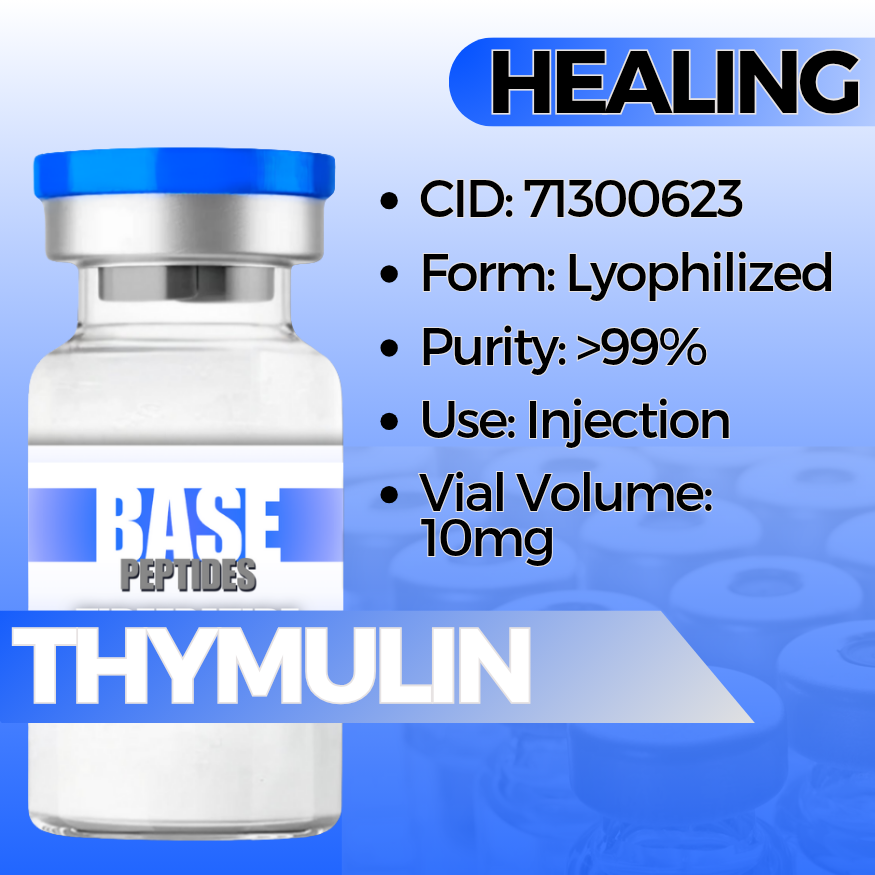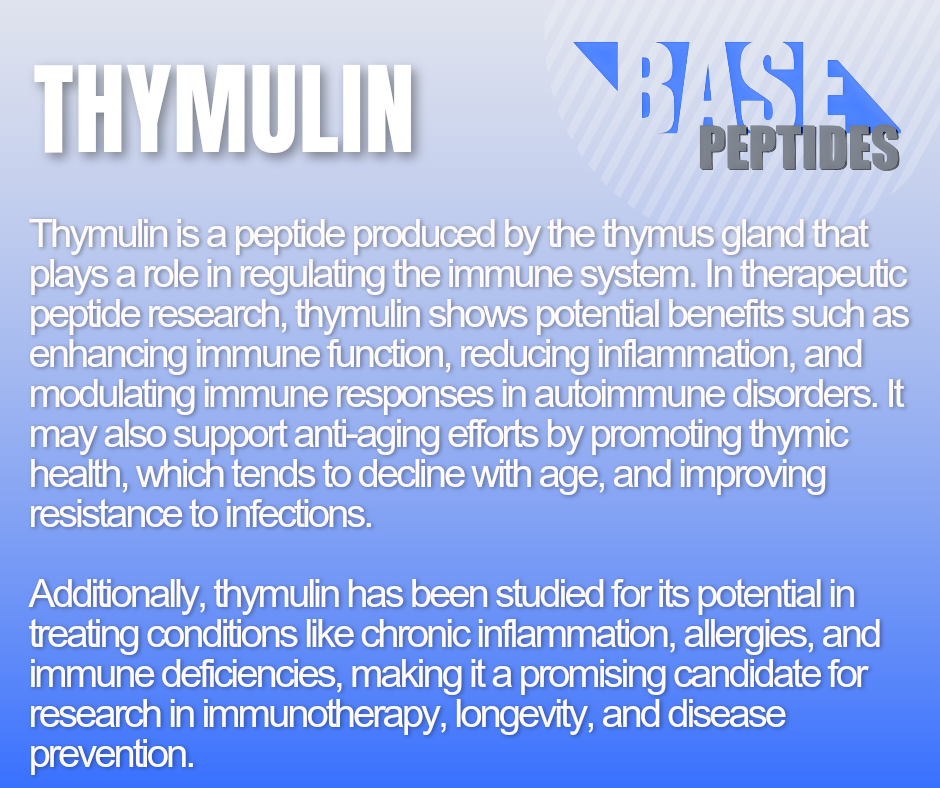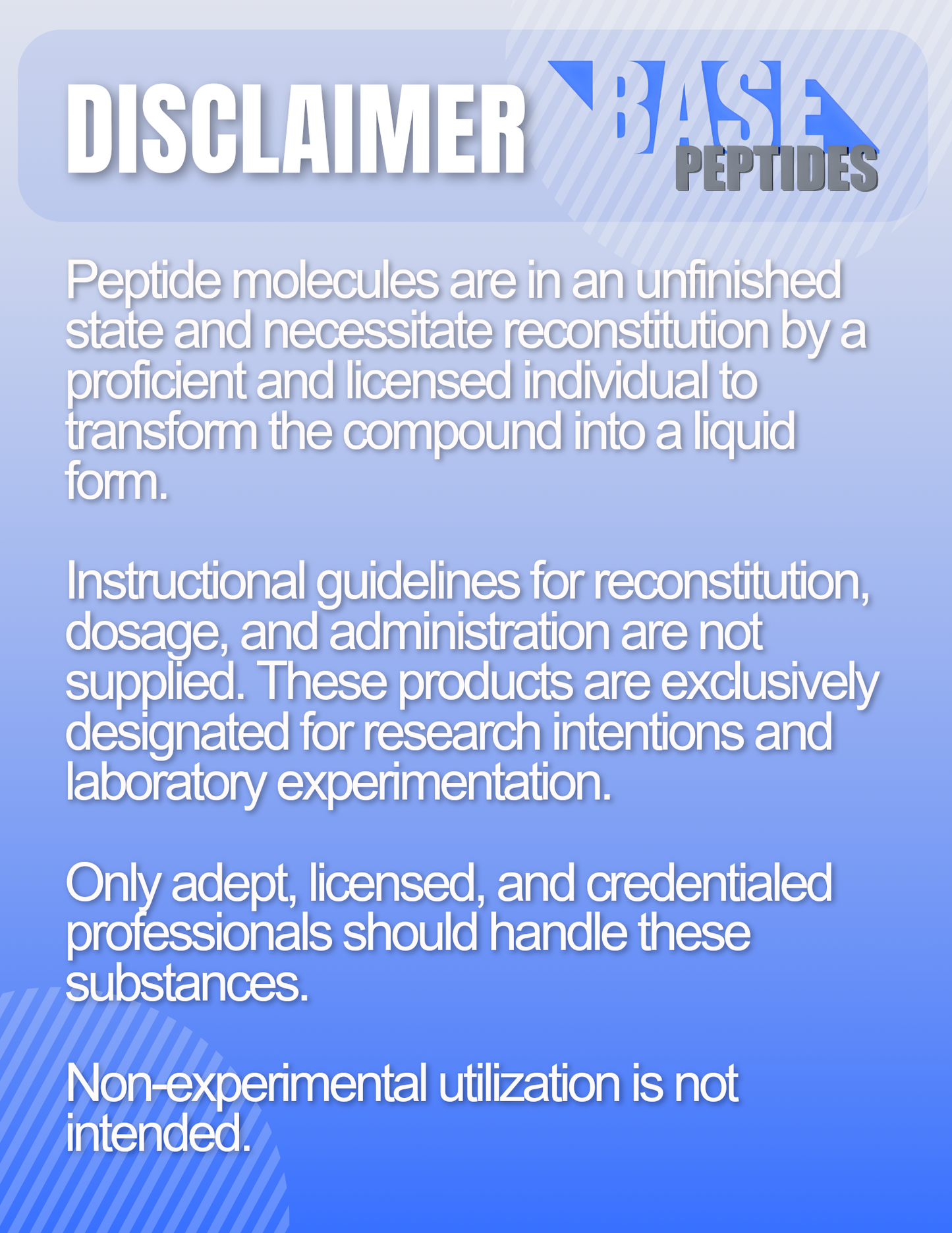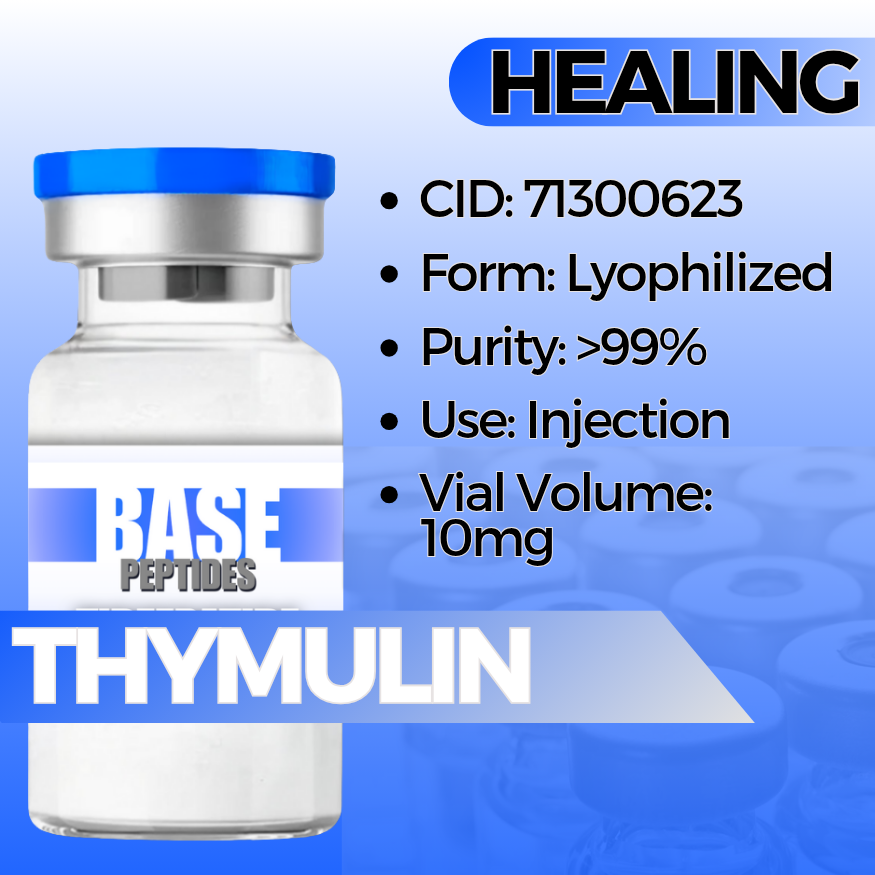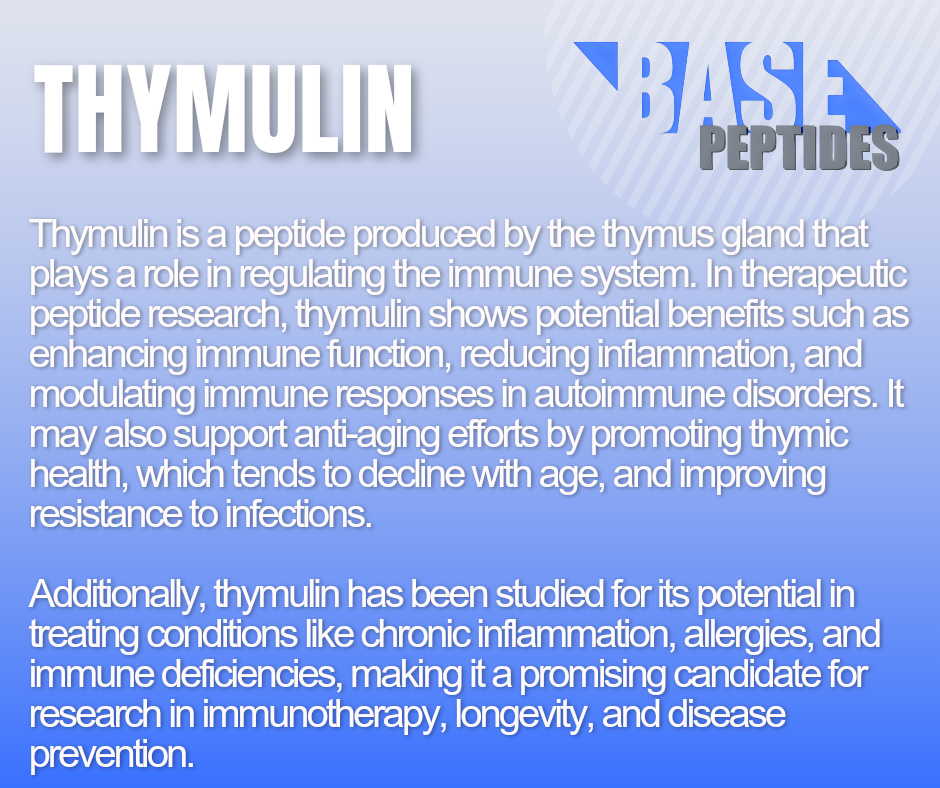Thymulin
Thymulin
Base Peptides are intended for licensed medical professionals and experienced researchers. Reconstitution required. Dosing and use instructions are not provided.
Regular price
$39.00
Regular price
$45.00
Sale price
$39.00
Shipping calculated at checkout.
Quantity
Couldn't load pickup availability
Thymulin — Thymic Humoral Factor (Zn-Dependent Nonapeptide)
Thymulin (historically “thymic factor”, FTS) is a zinc-dependent nonapeptide secreted by thymic epithelial cells. It’s used in research to probe T-cell differentiation, immune modulation, and neuroendocrine crosstalk between the thymus and HPA/thyroid axes.
Identifiers
- Synonyms: Thymic factor; FTS; Zn-Thymulin
- Sequence (nonapeptide): Pyr-Ala-Lys-Ser-Gln-Gly-Gly-Ser-Asn-OH
- CAS No.: 63958-90-7
- Formula / MW: C33H54N12O15 • ~858.8 g·mol⁻¹
- Cofactor: Zinc ion (biological activity requires Zn binding)
- Receptor/Target: Immune & neuroendocrine pathways (T-cell, astrocyte models; HPA axis readouts)
How It Works (Plain English)
- Immune signaling: Active Zn-thymulin supports T-cell maturation and function in thymus-dependent pathways.
- Neuroendocrine crosstalk: Links the thymus with pituitary/adrenal/thyroid signaling; levels vary with endocrine state in models.
- Chemistry note: The pyroglutamyl N-terminus and Zn binding stabilize conformation and bioactivity.
Why Researchers Use It
- To map immune development and thymus-dependent T-cell outcomes.
- To examine anti-inflammatory/analgesic potential of thymulin analogs (e.g., PAT/metFTS) in CNS and peripheral models.
- To explore neuro-immune-endocrine interactions (HPA/thyroid relationships, circadian variation).
Key Study Themes — What Was Tested, What Changed, Why It Matters
Zn-Dependence & T-Cell Function
- What was tested: Thymulin (± zinc) in thymectomized/immune-challenged models; T-cell differentiation/function readouts.
- What changed: Only the zinc-bound form is biologically active; supports thymus-dependent T-cell responses.
- Why it matters: Confirms the metallopeptide mechanism—vital for experimental design and interpretation.
Neuroendocrine Links (HPA/Thyroid)
- What was tested: Thymulin vs endocrine status (hyper/hypothyroid; ACTH modulation) with serial hormone panels.
- What changed: Thymulin levels track endocrine state in select cohorts; indicates bidirectional signaling between thymus and pituitary/thyroid.
- Why it matters: Useful model for studying systemic immune–endocrine coupling.
Anti-Inflammatory / Analgesic Analog Work
- What was tested: Thymulin analogs (e.g., PAT, metFTS) in CNS and neuropathic pain models; cytokine & behavioral endpoints.
- What changed: Select analogs reduced pro-inflammatory mediators and showed analgesic signals in preclinical studies.
- Why it matters: Positions thymulin scaffolds for neuroinflammation research.
Potential Research Applications
Immunology
- T-cell differentiation, thymic epithelial biology, cytokine panels.
Neuro-Immune Interfaces
- Astrocyte signaling, neuroinflammation, pain models.
Endocrine Physiology
- HPA/thyroid interactions, circadian hormone dynamics.
Synergistic / Comparator Peptides
Thymosin α1 (Tα1) / Thymosin β4
- Why compare: Distinguish thymic peptide families across immune endpoints and repair biology.
TA-1 + Thymulin (design-dependent)
- Why pair: Complementary immune-modulatory axes for multi-marker studies.
BPC-157 / TB-500
- Why pair: Tissue-repair peptides alongside immune-modulatory controls.
What’s in the Vial (Editable)
| Active | Per Vial | Grade / Purity |
|---|---|---|
| Thymulin (nonapeptide) | 5 mg (set per SKU) | Research-grade, ≥ 98–99% (HPLC/MS) |
| Appearance | White to off-white lyophilized powder | |
| Note | Biological activity is zinc-dependent; design assays accordingly | |
Specifications & Handling
- Form: Lyophilized peptide powder (lot-coded)
- Storage: ≤ −20 °C long-term; protect from light/moisture
- Stability: Avoid repeated freeze–thaw; prepare fresh solutions for assay
- Reconstitution (lab use): Sterile aqueous buffer; record solvent, concentration, pH, and time-to-assay
- Labeling: “Research Use Only”; CAS/lot/SKU and expiration clearly displayed
Known Concerns (Context)
- Metal dependence: Lack of zinc abolishes activity; trace-metal contamination can also alter results.
- Assay variability: Immune/neuroendocrine markers are context-sensitive—standardize timing and co-factors.
- General: For laboratory research use only; not for human consumption or therapeutic/veterinary use.
Regulatory & Use Notice
Sold for laboratory research use only. Not for human consumption, medical, or veterinary use. No human-use instructions are provided. Buyer is responsible for safe handling and regulatory compliance.
Thymulin (Thymic Humoral Factor, FTS) Research Peptide | Zinc-Dependent Nonapeptide | Immune, Neuroendocrine & Anti-Inflammatory Models
